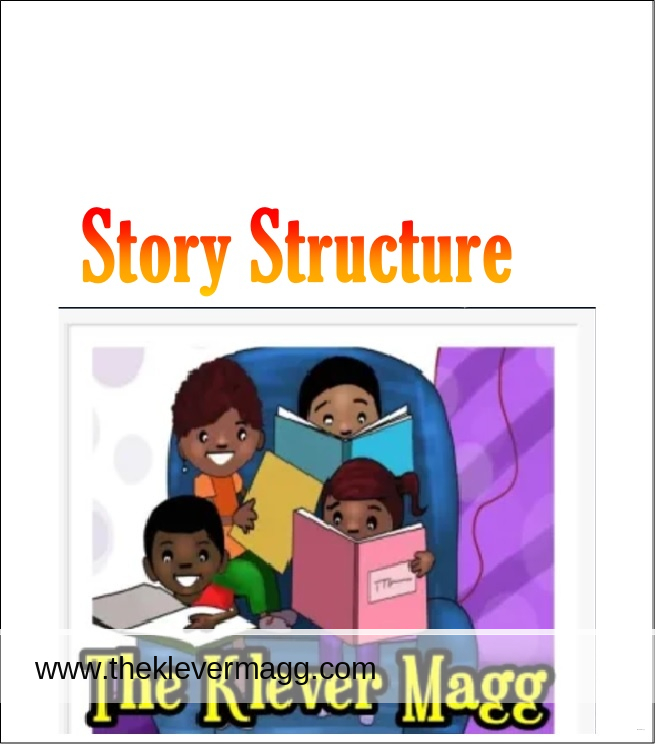Lesson on Story Structure
Lesson Story Writing
by Auntie Eunice
A story is any writing that expresses ideas and thoughts.
It means that the writer gets to express feelings and emotions instead of just presenting the facts. Stories are thus written based on imagination and assumptions.
To be a good writer at your level, you must have good control over your vocabulary, spelling, grammar, punctuation, and handwriting.
Stories are written in a particular pattern and knowing the style or patterns of story writing is a must.
Generally, there are three broad PARTS to every story. These are The Beginning, The Middle, and The Ending.
The Beginning
This part introduces your character and the main problem your character has.
To be able to write the beginning of your story very well, you need to look at the following:
-
Pick an idea for the story
The idea or theme of the story is the main concept you want to present to your reader.
You can get these ideas from your day-to-day activities. The idea for a story can come from talking to people, playing games, watching TV, looking at images, reading, shopping, going to school, visiting the hospital, embarking on an excursion, etc.
-
Create your CHARACTER
The character of a story is the main person, object or animal that the story is about.
- Pick your SETTING
After choosing your character, you pick your setting for the story.
The setting is simply the place where the story happens.
It could be on earth in a particular town or village, on the moon, in the sea, etc. The fact is it could be anywhere your creative mind can think of.
- Pick a TITLE for your story
The title is the name you would want to give your story.
Examples of story titles are, Batman, The Magician’s Wand, Moonlight, Touched by an Angel, etc.
- Write the HOOK of the Story
This is where you introduce your character, the setting, and the problem he/she/it is faced with.
We call it the hook because it is supposed to grip your readers to your writing and make them want to read on to find out what will happen next.
The hook is usually presented at an event, and this is called the INCITING EVENT.
The inciting event is the point in the story where the main character encounters the first conflict or problem. The emphasis here is WHERE.
The Middle
The middle of your story takes care of a series of crises, conflicts, and complications your character faces as he/she/it tries to get out of the main PROBLEM introduced in the BEGINNING.
These crises, conflicts, and complications are presented in plot points.
A plot point is an incident that directly influences what happens next and is usually presented at different locations in the chosen setting of the story and at different events until the CLIMAX is reached.
The climax is the point in your story where the tension and drama are at their peak and there seems to be no way out for your character.
For a short story, the characters’ conflicts or crises should not be more than three.
The Ending
This part focuses on the solution your character finds to the problem. This is also known as the CONCLUSION.
This is the point in the story where everything falls into place and the main PROBLEM of the story is solved. Your character finally finds the solution to the problem.
Join Klever Academy for a hands-on experience in story writing today by sending a WhatsApp to Eunice at 0244084955 or +233244084955.
